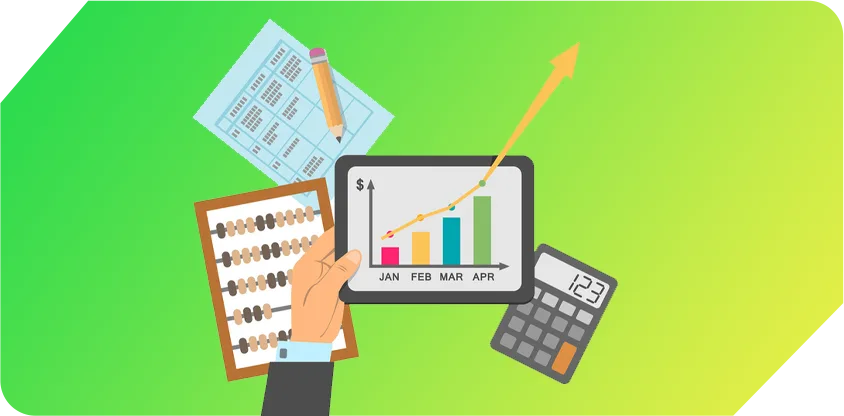Achieving long-term financial goals can be a challenge for many people, and there are several reasons why this is the case. Despite their best efforts, many individuals struggle to reach their financial objectives due to a lack of discipline, poor money management habits, and unexpected expenses.
One of the biggest challenges in personal finance is the tendency to overspend and mismanage finances. Without a strict budget and discipline to stick to it, individuals may find themselves spending more money than they earn, leaving little room for saving and investing. Additionally, many people are guilty of making impulsive purchases, which can quickly add up and detract from their long-term financial goals.
Another factor that makes it difficult for people to achieve long-term financial goals is the presence of unexpected expenses. Emergencies, such as medical bills or car repairs, can quickly drain an individual’s savings, leaving them unable to make progress towards their financial goals. Even if they have an emergency fund in place, unexpected expenses can still be a major roadblock to achieving long-term financial success.
The cost of living, especially in urban areas, is also rising, making it difficult for people to achieve their financial goals. With housing, transportation, and food costs rising, many people are finding it difficult to keep up, leaving little room for saving and investing.
To overcome these challenges, individuals need to develop a comprehensive financial plan that includes a strict budget, regular saving and investing habits, and a strategy for managing unexpected expenses. It’s also important to maintain discipline and stay focused on long-term goals, even when short-term temptations arise. With the right mindset and a solid plan in place, individuals can overcome the challenges of personal finance and achieve long-term financial success.
It can be difficult to stay passionate and on track to reach your dreams when it feels like your progress is slow. You may also be feeling overwhelmed by the size and complexity of your financial goals. But there are a few simple steps you can take to stay motivated and ensure success.
Break down your goals into smaller, achievable steps.
Having smaller, bite-size goals can go a long way in helping you stay motivated and make progress towards your long-term goals. When you’re feeling overwhelmed, it can be easy to give up. So it’s important to break down your big financial goals into smaller, more manageable tasks.
When it comes to achieving your long-term goals, it can be easy to get overwhelmed by the enormity of the task at hand. However, breaking down your goals into smaller, achievable steps can help make the process more manageable and increase your chances of success. In this chapter, we’ll explore the process of breaking down your goals into smaller, achievable steps.
Step 1: Define Your Goal
The first step in breaking down your goals into smaller, achievable steps is to clearly define what you want to achieve. This could be a personal or professional goal, such as saving for retirement, paying off debt, or starting a business. Once you have a clear understanding of what you want to achieve, you can start the process of breaking down the goal into smaller, manageable tasks.
Step 2: Identify the Key Components of Your Goal
The next step is to identify the key components of your goal. This involves breaking down the goal into smaller, more manageable tasks that will help you achieve the overall goal. For example, if your goal is to pay off debt, you might break it down into smaller tasks such as creating a budget, finding ways to increase your income, and making a plan for debt repayment.
Step 3: Prioritize the Steps
Once you have identified the key components of your goal, you need to prioritize the steps. This involves determining which tasks are most important and need to be completed first. For example, if your goal is to pay off debt, paying off the debt with the highest interest rate should be a priority.
Step 4: Set Specific, Measurable, Attainable, Relevant, and Time-bound (SMART) Goals
When breaking down your goal into smaller, achievable steps, it’s important to set SMART goals. This means that each step should be Specific, Measurable, Attainable, Relevant, and Time-bound. For example, instead of simply saying “I want to pay off debt,” a SMART goal would be “I want to pay off $5,000 of debt in the next 12 months by creating a budget, finding ways to increase my income, and making a plan for debt repayment.”
Step 5: Create a Plan of Action
It’s time to create a plan of action. This involves deciding on a timeline for completing each step and determining what resources you need to achieve your goals. It’s also important to build in accountability measures, such as regular check-ins or progress reports, to help you stay on track.
Breaking down your goals into smaller, achievable steps is a proven strategy for achieving success. By following these steps, you can turn big, daunting goals into manageable tasks that are easier to accomplish.
Create milestones that track your progress
Milestones offer a sense of accomplishment and can help to keep you motivated. If a goal feels too daunting and far away, it can be encouraging to set and track smaller milestones that demonstrate progress. No matter how small, any progress is still progress and can help to keep you going towards your goal.
One of the key steps in achieving your long-term goals is tracking your progress. By monitoring your progress, you can ensure that you are staying on track and make adjustments as needed to reach your desired outcome. We’ll explore the importance of tracking your goals and how to do so effectively.
Step 1: Choose a Tracking Method
There are many different methods for tracking your goals, including pen and paper, spreadsheet software, and online tools. The method you choose will depend on your personal preferences and the complexity of your goals. For simple goals, a simple spreadsheet or pen and paper may be sufficient. For more complex goals, such as saving for retirement or paying off debt, a more sophisticated tracking method may be necessary.
Step 2: Monitor Your Progress Regularly
Once you have chosen a tracking method, it’s important to monitor your progress regularly. This could be daily, weekly, or monthly, depending on the complexity of your goals. Regular monitoring will help you stay on track and make adjustments as needed.
Step 3: Start a Financial Journal
One of the most effective ways to track your financial goals is by starting a financial journal. In your journal, you can record your income, expenses, and other financial information. This information can then be used to help you make better financial decisions and stay on track towards your goals.
Step 4: Use Budgeting Tools
In addition to a financial journal, there are a variety of budgeting tools that can help you track your spending and monitor your progress towards your financial goals. Some popular tools include spreadsheet software, online budgeting apps, and personal finance software. By using these tools, you can easily see where your money is going and make changes as needed to stay on track.
Step 5: Set Reminders and Alerts
Another effective way to track your financial goals is by setting reminders and alerts. For example, you can set a reminder to check your budget each week or an alert to notify you when a bill is due. These reminders and alerts can help you stay on track and ensure that you are making progress towards your goals.
Step 6: Adjust Your Plan as Needed
Finally, it’s important to adjust your plan as needed. Life can be unpredictable, and you may encounter obstacles along the way. By regularly monitoring your progress and making adjustments as needed, you can ensure that you are on track to achieve your goals.
Tracking your goals is a critical step in the process of achieving success. By following these steps, you can ensure that you are staying on track and making progress towards your desired outcome.
Reward yourself for completing the smaller goals. A little reward or treat can do wonders in helping you stay motivated. Whether it’s a pair of new shoes or a massage, think of something that you can look forward to after completing a goal and make it part of your journey.
Celebrate Your Successes
As you track your progress, it’s important to celebrate your small successes along the way. This could be a small celebration, such as a night out with friends, or a larger reward, such as a trip or a new item.
Rewarding yourself for reaching financial goals is a great way to stay motivated and on track towards your long-term financial objectives. Here are some ways to reward yourself after reaching a smaller financial goal:
- Treat yourself to a nice meal or drinks at a fancy restaurant or bar.
- Buy yourself a small luxury item, such as a new outfit, piece of jewelry, or a tech gadget.
- Take a weekend trip to a nearby city or town to explore and relax.
- Treat yourself to a spa day, including massages, facials, and other treatments.
- Purchase tickets to a concert, theater show, or sporting event.
- Invest in an experience, such as skydiving, hot air balloon rides, or a cooking class.
- Buy a new book, album, or movie that you’ve been wanting to enjoy.
- Treat yourself to a shopping spree and buy a new wardrobe.
- Get a new hobby, such as photography, painting, or knitting.
- Upgrade your living space with a new piece of furniture or a home décor item.
Remember, the goal is to reward yourself without breaking the bank or undoing the progress you’ve made with your finances. Choose a reward that fits within your budget and is meaningful to you. Celebrating your financial accomplishments with friends and family is also important, don’t forget to share the news with them.
Finally, don’t give up if you hit a snag or two. You may find yourself off course every once in a while, but that’s okay. Just get back on track and make sure to focus on your overall goal. It’s easy to become discouraged and give up, but remember the bigger picture and the rewards of achieving your long-term financial goals.
End
In conclusion, personal finance management is a crucial aspect of achieving long-term financial success. By setting clear financial goals, creating a budget, reducing expenses, increasing income, and investing wisely, you can take control of your finances and secure a stable financial future. It’s important to stay disciplined and consistent with your financial habits, and to regularly reassess your progress and adjust your strategy as needed. Remember, personal finance management is a lifelong journey, and the more effort you put into it, the more successful you will be. With determination, patience, and a plan in place, you can reach your financial goals and enjoy the peace of mind that comes with a secure financial future.















